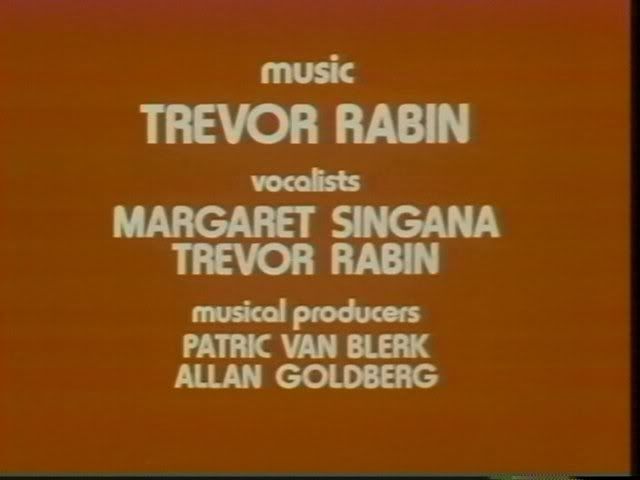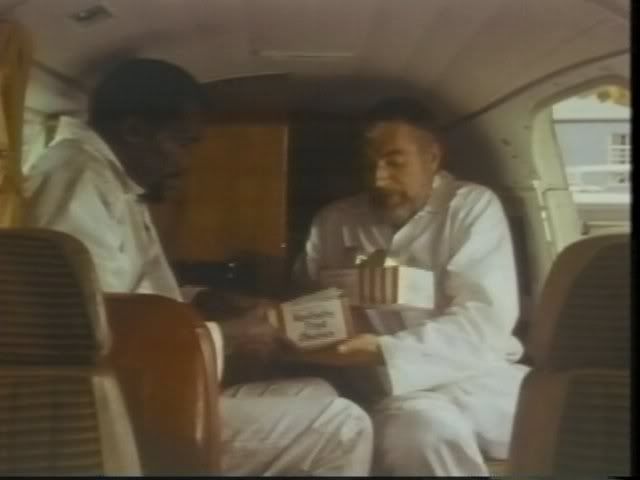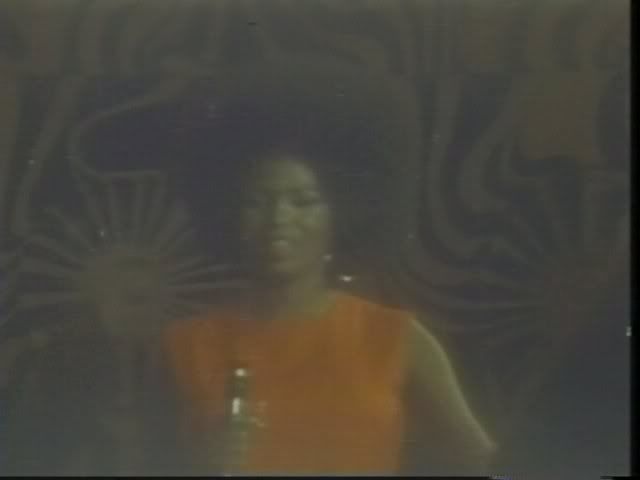"I did a movie when I was 19, long before MIDI or anything. My wife and I went to a resort and took a projector and projected the movie on a sheet. I sat there with manuscript paper. It was a terrible film, but I was very young and had just finished studying orchestra. So, it was very exciting to be doing a film and working in a large way with an orchestra."
- Innerviews, 2004
"It was a terrible film and not a great score."
- Score Magazine, 2004
________________________________
Trevor’s first professional credit as a film scorer, Death of a Snowman (later to be known as Soul Patrol and Black Trash), debuted in South Africa in 1976, although overseas distribution would not come till a couple years later. An unused cue, “Death of Tulio,” appears on the first Rabbitt album Boys Will Be Boys! which was released in 1975.
A sight we would become accustomed to, twenty years later.

Although it is normally classified as Blaxploitation, Death of a Snowman is more of a typical crime drama; it has been posited that the film does a disservice by not making any true reference to the socio-political climate in South Africa at the time, though there are a few references regarding the economic disparity between the races (in the long view, of course, the cause can be inferred). The plot, such as it is: a black vigilante goes after those in the Johannesburg criminal underworld while on the other side of the fence a black reporter and a white detective work together to try and stop him, believing that the law is greater than any one man…but is the vigilante’s motivation as pure as they are led to believe?
While it’s true there is bad acting, bad dialogue, badly-staged fight sequences (people do a lot of falling through windows and partitioned walls), equally bad editing and the entire film was made on the cheap…well, I’ve seen worse in my time. Admittedly I have a soft spot for 70s films of all kinds.
The protagonists: Steve (Ken Gampu) and Ben (Nigel Davenport). Is this why there are so many ZA expats in Los Angeles? They crave the “real” KFC?

There are orchestral elements in the soundtrack, but the majority of the score is actually rock and R&B; much of what Trevor was playing at the time both in Rabbitt and also as a session player at RPM and Satbel. A desire to work as a scorer/arranger was already somewhat fulfilled by session work (and during subsequent recording with Rabbitt) but this project was perceived, it occurs to me, as a direct evolution of Trevor’s studies with conductor/composer Walter Mony. A sort of putting his knowledge to the test, as it were.
In keeping with what I perceive as his drive and ambition (with just a slight touch of youthful arrogance), it made sense to try just about anything which came along in Trevor’s musical purview – rock, pop, jazz, soul/R&B, disco, even commercial jingles – and so scoring a film wasn’t likely considered something he couldn’t do, it was only a question of doing it as well as he could. And for a 19-year-old who was already considered a wunderkind it’s a definite achievement…its’ elements might strike one as typical for the time, but there are some memorable themes and performances, in my opinion (as someone who has attempted to familiarize herself with all the aspects of Trevor’s career).
Some of those memorable cues…
-the music during the airport stake-out scene has some great violin runs
-there is a scene where the smugglers are tailed, featuring some interesting guitar work which makes me think of chickens (and there are chickens in the scene)
-when Tulio (one of the Snowman’s thugs) gets his, the cue is much more spooky and dramatic than what was originally planned, it seems
-during a fashion shoot with Steve’s girlfriend (whose name happens to match that of the song) we hear “Charlie” (Rabbitt's biggest hit) playing in the background
-a scene in a park where Steve is reflective and feeding the ducks features a lovely solo piano cue
-there is a theme for Heather (the girlfriend of another of the Snowman’s thugs) which is rather pretty
-the end theme has a haunting melancholy quality to it.
The film also features an appearance by the mighty “Lady Afrika,” vocalist Margaret Singana, whom Trevor worked with on several records, mostly notably as a co-producer, arranger, and musician on four of her studio albums (Love Is The Power,Where Is The Love, Stand By Your Man and Tribal Fence), as well as a duet on the song “Tribal Fence” (written by Ramsey McKay of Freedom’s Children) for the Rabbitt album A Croak and A Grunt in the Night. There are two nightclub scenes, in one of them Margaret is singing “Love Is The Power,” I believe.
I apologize for the quality, the film stock is really washed-out in this sequence, it was difficult to get a good screenshot.
